Last Updated on June 23, 2025 by teamobn
While insects pop into the minds of many when they hear the words “garden pest,” rats are a true scourge in many gardens. Rats will fatten themselves on seeds, vegetables, bulbs, nuts, fruit, and – if you are very lucky – even flowers in your garden.
If you find a pile of nibbled leaves and wood chips in the toolshed, it’s a good indication that a rat has been living there. Rats also love bird seeds – they will chew through the plastic container and devour the entire pile.

How to Keep Rats Out of Garden
Contents
- 1 How to Keep Rats Out of Garden
- 1.1 Destroy Rat Hideouts Before They Multiply
- 1.2 Cut Off the Buffet to Keep Rats Away
- 1.3 Sink Kitchen Scraps Deep to Starve Rats
- 1.4 Cut Kitchen Scraps to Cut Rat Visits
- 1.5 Break the Grub Buffet to Starve Rats
- 1.6 Build a Living Scent Wall Rats Won’t Cross
- 1.7 Lock Out Rats With Gap-Free Walls
- 1.8 Keep Order, Keep Rats Out of Sight
- 2 Conclusion
You cannot rid your garden or backyard of these creatures completely without using pest control methods that will harm your plants. Rats are descended from a long line of rodents that appeared soon after the extinction of the dinosaurs. Revolting and disease-ridden as they are, rats are excellent survivors.
Rats also are part of the food web. Hawks, owls, and foxes would go hungry without them. But you should do your best to discourage them from your garden, nevertheless. Below are few tips to help you keep the cunning vermin from overrunning your garden.
Destroy Rat Hideouts Before They Multiply
Rats thrive where shelter stays undisturbed. Removing these hideouts disrupts breeding cycles and pushes the pests away before they turn your beds into a permanent residence.
Mow and Edge Regularly
Short grass leaves rodents exposed to hawks and neighborhood cats. Keep turf under three inches during the growing season. Trim fence lines and raised-bed borders with a string trimmer every two weeks. Clear weeds before they seed. A tidy lawn denies rats corridors that lead straight to vegetables and compost heaps.
Refresh Brush Piles
Storm debris and fallen branches quickly become rodent condos. Chip or burn limbs within a week of pruning. If you must store sticks for kindling, stack them on a metal rack at least 18 inches off the ground. Sunlight and airflow dry the pile, making it unattractive for nesting.
Rotate and Elevate Wood Storage
Firewood stacked against a shed invites burrowing. Shift logs to a new spot each month to expose hidden tunnels. Use pallets or concrete blocks to lift the stack so air can circulate underneath. Cover only the top row with a tarp so the sides stay open and uninviting to rats.
Dispose of Plant Waste Promptly
Spent tomato vines and pulled weeds lure rodents looking for quick bedding. Bag soft plant material the same day you clear beds or bury it deep in hot compost. Keep refuse bins sealed and rinse them out every week to wash away lingering food scents.
Block Hidden Cavities
Check rock walls, retaining timbers, and old equipment for gaps wider than a nickel. Fill small holes with steel wool, then cap with quick-set mortar or hardware cloth. Place heavy flat stones over hollow tree stumps. Closing these snug retreats forces rats to search elsewhere, reducing pressure on your garden.
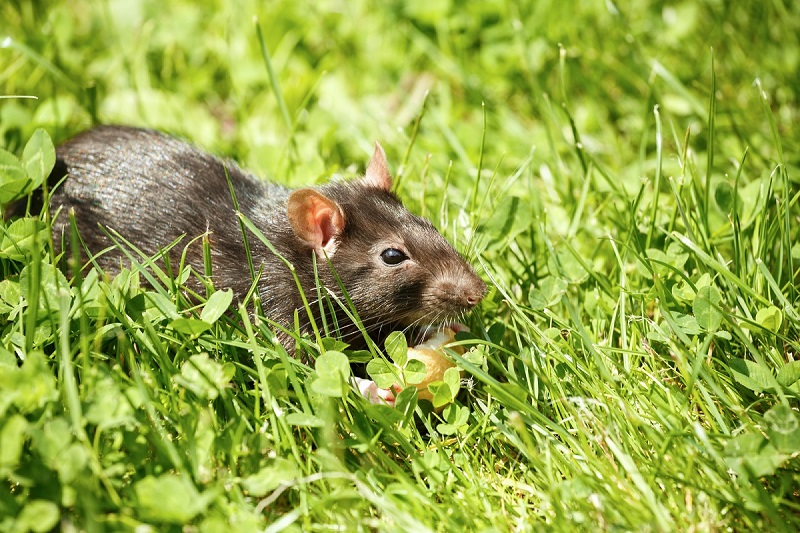
Cut Off the Buffet to Keep Rats Away
Rats stay only where meals come easy. Cut those handouts and they’ll wander off to richer pickings in a week or two.
Pause Bird Feeding
Songbirds aren’t the only diners beneath a feeder. Take feeders down for ten days and sweep fallen seed each morning. Hungry rats soon abandon the area. Once bird traffic drops, reinstall feeders on metal poles at least six feet from shrubs. Attach a wide baffle underneath so rats can’t climb up from the ground.
Switch to Rodent-Proof Dispensers
Plastic tubes invite gnaw marks. Replace them with steel or thick ceramic feeders that lack open trays. Narrow ports dole out seed one hull at a time, leaving little to spill. Slide a catcher tray below each port to snag loose kernels before they hit soil.
Lock Up Bulk Seed and Pet Food
Store every bag in a galvanized garbage can with a tight-fitting lid. Slip a paving stone on top for extra weight. Keep cans on bricks so the metal stays dry and odor low. Label one bin for bird seed and another for dog chow to avoid messy cross-storage.
Harvest Produce the Day It Ripens
Tomatoes left on the vine past peak invite midnight snacks. Pick ripe fruit daily and gather fallen berries before dusk. Move harvest baskets to the kitchen right away. Compost only spoiled produce after chopping it into small pieces and covering with grass clippings.
Tighten Trash and Compost Security
Use latching lids on outdoor bins. Drill two small drain holes near the bottom to prevent foul liquid odors. Line compost tumblers with quarter-inch hardware cloth at vents. Turn the pile twice a week and keep it moist enough to steam; active heat destroys food scents that lure rats.
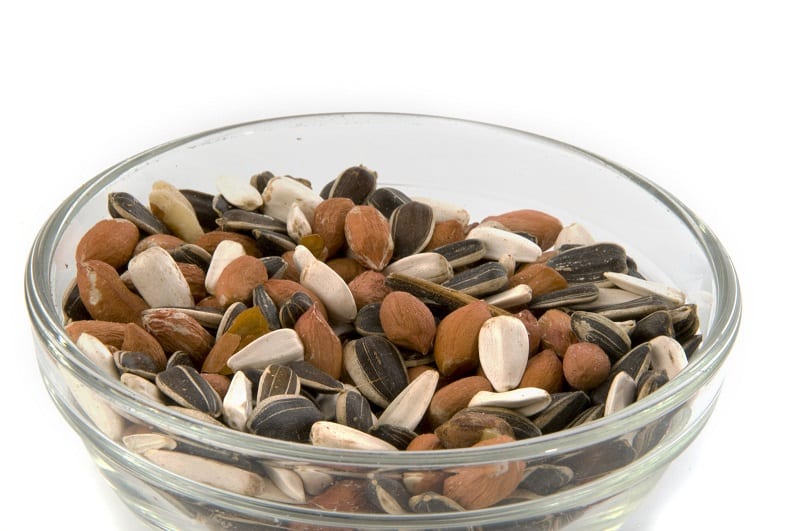
Sink Kitchen Scraps Deep to Starve Rats
Compost feeds soil microbes, but it can also feed rodents if you leave scraps on the surface. Burying waste properly keeps nutrients while cutting rat traffic.
Dig, Drop, and Cover Technique
Use a hand fork to open a six-inch pocket in the hot center of the heap. Drop fruit peels, coffee grounds, and plate scrapings into that hollow. Fold the warm compost back over the food so no smell escapes. Rats hunting an easy bite will meet only steaming soil and turn away.
Use Carbon Caps: Grass and Leaves
Add a two-inch blanket of fresh clippings or shredded leaves every time you bury kitchen waste. The light carbon layer traps scent and balances nitrogen. This mix speeds up decomposition and heats the pile. Hot compost breaks food down fast, leaving nothing for rodents to chew.
Maintain Moisture and Heat
Keep the pile as damp as a wrung-out sponge. Spray the layers during dry spells to support microbial activity. Internal heat above 130 °F discourages nesting and destroys odors rats track. Insert a thermometer once a week to confirm temperature stays high.
Turn the Pile for Aeration
Flip the heap with a pitchfork every seven days. Bringing buried scraps to the center renews airflow and maintains heat. Fresh oxygen fuels bacteria that digest food quickly. Constant motion denies rats the stable tunnels they need for nests.
Seal the Base with Hardware Cloth
Before starting a new heap, lay quarter-inch mesh on the ground and anchor it with bricks. The screen blocks burrowing rodents without stopping earthworms. Secure edges with U-pins so rats cannot pry a gap. Now your compost works for plants, not pests.
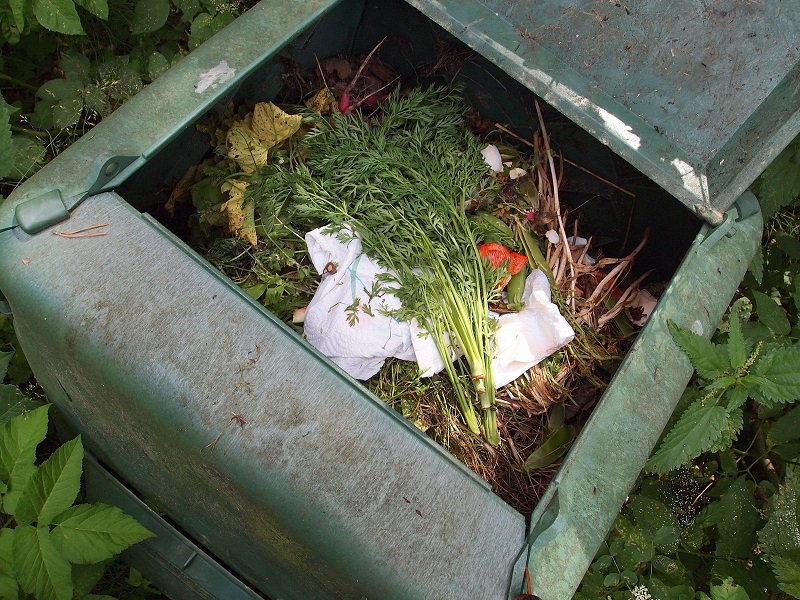
Cut Kitchen Scraps to Cut Rat Visits
Leaving food waste out of the heap removes the main lure. Rats will search elsewhere once the buffet is gone.
Shift to Green-Only Compost
Fill your pile with grass clippings, leaves, and spent plant stems. These break down fast, heat up, and feed soil microbes. Without meat, dairy, or table scraps, the heap stays scent-light. Rats sniff and move on because the calories don’t match the effort.
Start a Vermicompost Bin Indoors
Red wigglers turn peelings and coffee grounds into rich castings behind closed lids. A plastic tote with air holes and damp bedding fits under a sink. Harvest the worm compost every few months and bury it near root zones. You keep nutrients on site while denying rodents an outdoor feast.
Dig Compost Trenches for Direct Burial
Slice a narrow trench between vegetable rows. Drop chopped food waste into the slot, cover it with six inches of soil, and replant the bed later. Soil microbes and worms handle the breakdown underground. Rats can’t smell the scraps through the packed earth.
Keep Food Waste in Sealed Countertop Caddies
Collect peelings in a lidded, charcoal-filtered pail until your next trench dig or worm-bin feed. Empty the pail each evening so odors never build. Wash it with hot soapy water to remove residue that could attract pests.
Monitor Rat Activity and Adjust
Walk the garden at dusk looking for fresh droppings or gnaw marks. If signs drop off after two weeks, your no-food strategy works. Still see tracks? Tighten pet-food storage and pick ripe produce daily. Consistency keeps the garden off every rat’s dinner route.
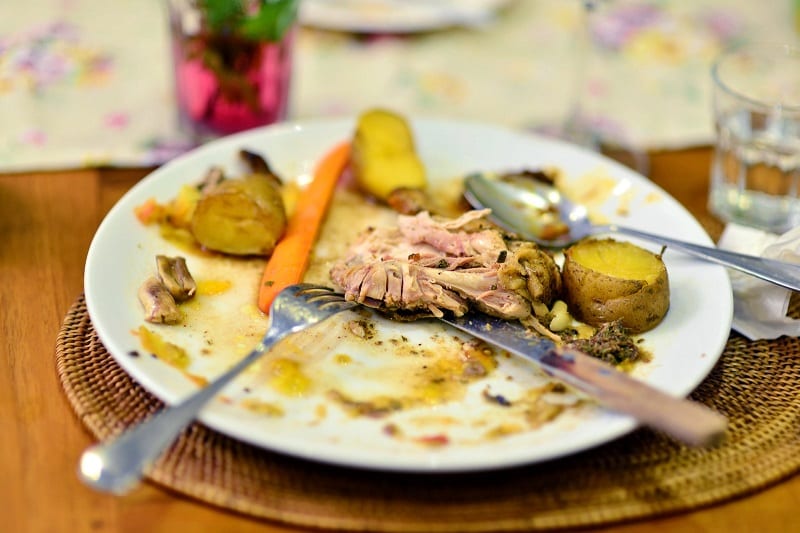
Break the Grub Buffet to Starve Rats
Rats crave the fat-filled grubs burrowed beneath patchy turf. Remove those larvae and you pull a vital protein source from their menu, strengthening grass and weakening pests at the same time.
Identify Grub Hotspots
Lift a square foot of sod and count curled white larvae near the soil line. More than ten per square foot signals a feast big enough for rodents.
Learning how to keep rats out of garden begins with mapping these feeding zones. Mark the worst patches so you target treatments efficiently and avoid blanket chemical use.
Apply Milky Spore for Long-Term Control
Spread dry milky spore powder with a drop spreader on a wind-free day. Water lightly to wash spores into the root zone. Paenibacillus papillae infects Japanese beetle grubs, reproduces in their bodies, and persists for years.
This living treatment works slowly but builds a soil bank that keeps future grub waves low, trimming one big reason rats scout your lawn.
Release Beneficial Nematodes at Dusk
Mix Steinernema or Heterorhabditis nematodes with lukewarm water and spray the solution over moist turf just after sunset. The microscopic hunters swim through soil films, locate grubs, and release bacteria that kill within days.
Keep the lawn damp for a week so nematodes move freely. Their stealth attack spares earthworms and pollinators while wiping out rat-attracting larvae.
Encourage Predatory Birds and Insects
Install a small raptor perch or owl box near open grass. Hawks and barn owls dive for rodents and stray adult beetles. Plant yarrow and dill along garden edges to feed parasitic wasps that lay eggs in beetle pests. Natural predators reduce grub numbers without disrupting the ecosystem, giving you a chemical-free assist.
Improve Lawn Health to Discourage Egg Laying
Dethatch heavily matted turf in spring and overseed with drought-tolerant blends. Deep, infrequent watering promotes roots that resist beetle damage. Mow at three inches to shade soil and make it harder for beetles to penetrate. Combine these cultural steps with biological treatments and you reinforce how to keep rats out of garden while cultivating resilient, lush grass.
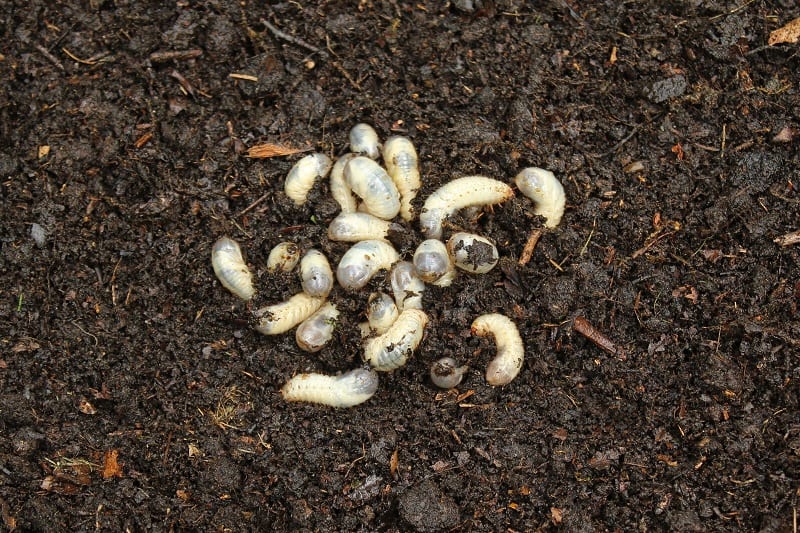
Build a Living Scent Wall Rats Won’t Cross
Fragrant herbs and flowers work like a natural fence. Their oils overwhelm rodent senses, making your beds less appealing than the neighbor’s buffet.
Choose High-Oil Herbs First
Mint, basil, oregano, thyme, and garlic pump out strong aromatics all summer. Pick hardy cultivars that thrive in your zone so growth stays dense without fuss.
Add Spicy and Medicinal Accents
Ring gaps with cayenne peppers and echinacea. Heat from the peppers irritates whiskers, while echinacea’s earthy odor adds another defensive layer.
Mix in Floral Repellers for Color
Daffodils, marigolds, and lavender deter rodents yet welcome pollinators. Stagger bloom times so something smelly stands guard from early spring through fall.
Plant a Double Row Perimeter
Set the first row six inches outside raised-bed edges. Tuck a second row another foot out. Overlapping scents create a barrier rats must endure twice.
Keep Oils Potent With Regular Care
Snip herb tips weekly to encourage bushy regrowth and stronger fragrance. Water at the base to avoid washing off surface oils that repel pests.
Refresh Bare Patches Fast
Replace any frost-damaged plants right away. Empty gaps give rodents clear lanes. Slip in quick growers like summer savory for instant coverage.
Combine With Mulch Infusions
Scatter crushed mint stems or dried lavender heads under the border. Sun-warmed mulch releases bonus aroma, reinforcing your living wall around the clock.
Track Effectiveness and Adjust
Walk the perimeter every few nights. Fewer droppings and chew marks mean success. If activity spikes, widen the border or layer additional garlic chives inside.
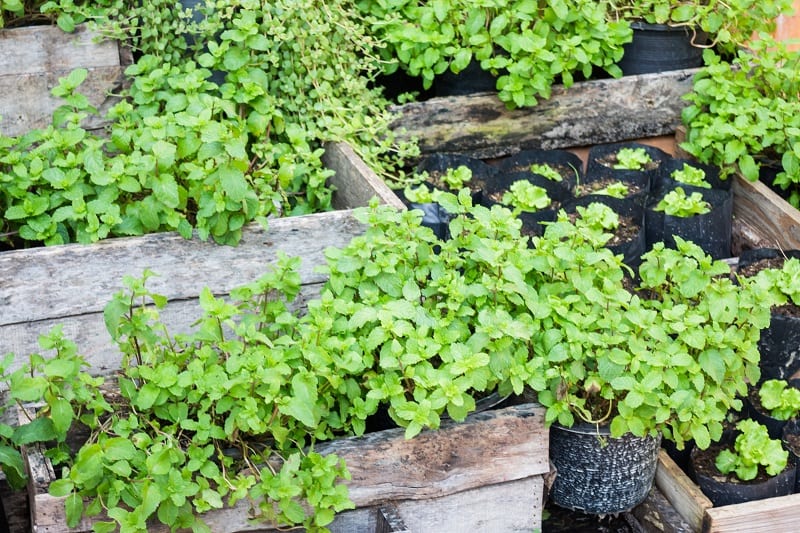
Lock Out Rats With Gap-Free Walls
Tiny openings invite winter squatters. Seal every crack now and you’ll stop rodents before they unpack bedding inside your toolshed.
Inspect Entry Points Every Season
Walk around at dusk with a flashlight. Shine the beam along baseboards, vents, and eaves. Light spilling through a gap means a rodent can slip through.
Choose Rodent-Proof Fillers
Pack small holes with steel wool, then smear exterior-grade caulk over the fibers. The mix sets hard and tastes sharp, so gnawing stops fast.
Add Metal Flashing to Wide Gaps
Cover chewed corners and warped siding with galvanized flashing cut to size. Screw it tight against wood so rats can’t pry an edge loose.
Reinforce Doors and Windows
Install door sweeps that touch the threshold. Fit stainless mesh over louvers and screen vents. Close sliding windows with a simple dowel in the track.
Seal Floors and Rooflines
Pour concrete into floor cracks wider than a pencil. Staple quarter-inch hardware cloth under rafters where daylight shows through corrugated roofing.
Keep Airflow Without Openings
Swap open vents for louvered ones fitted with mesh. You get ventilation but block furred invaders hunting a warm loft.
Recheck After Heavy Weather
Wind and rain shift siding and loosen sealant. Inspect again after storms. Early repairs stop rats before they map a fresh route indoors.
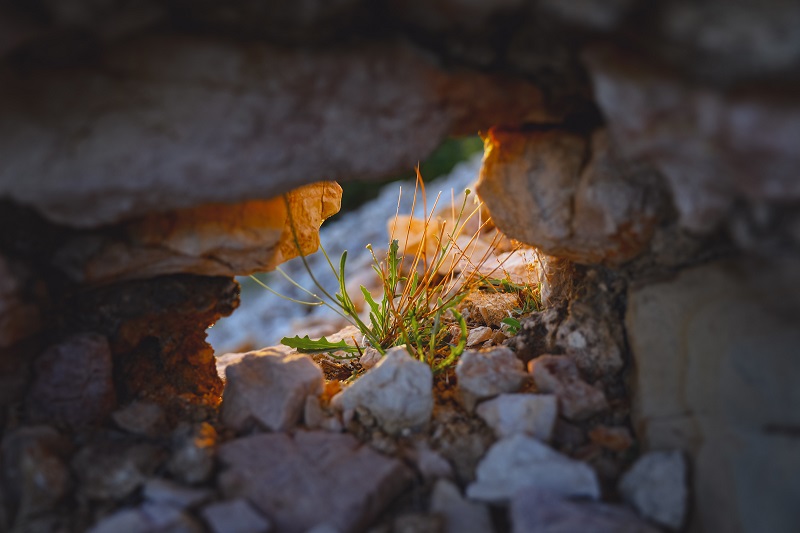
Keep Order, Keep Rats Out of Sight
Rats thrive in cluttered yards. Clear view lines expose them to predators and send them packing.
Trim Ground Cover and Lawn Often
Set mower blades to three inches and cut every week during the growing season. Edge fence lines and around sheds with a string trimmer so no corridor hides whiskers.
Organize Storage Corners
Stack pots, stakes, and spare lumber on raised racks. Leave six inches of clearance beneath for airflow. Roll tarps tight and tie them so rodents cannot tunnel inside folds.
Sweep Up Food and Waste Fast
Pick ripe produce daily and gather fallen fruit before dusk. Scoop pet droppings each evening. Bag garden debris instead of piling it by the fence.
Maintain Bin Hygiene
Wash garbage cans with hot soapy water every month. Dry them in the sun to kill lingering odors. Fit tight lids and use a bungee cord if raccoons or winds pop them loose.
Patrol Hot Spots Weekly
Walk paths at twilight with a flashlight. Look for fresh burrows, droppings, or gnaw marks near compost, decks, and woodpiles. Act the same day you spot sign.

Conclusion
A spotless yard removes shelter and food in one move. Rats find no shadowy maze to hide their runs. Short grass and orderly tools give owls and cats a clear line of attack. Clean bins deprive rodents of midnight buffets. Sustained tidiness keeps rat pressure low long after traps and repellents fade.
Rats are just one of many pests that can destroy your garden. Check out our comprehensive pest control guide next!






